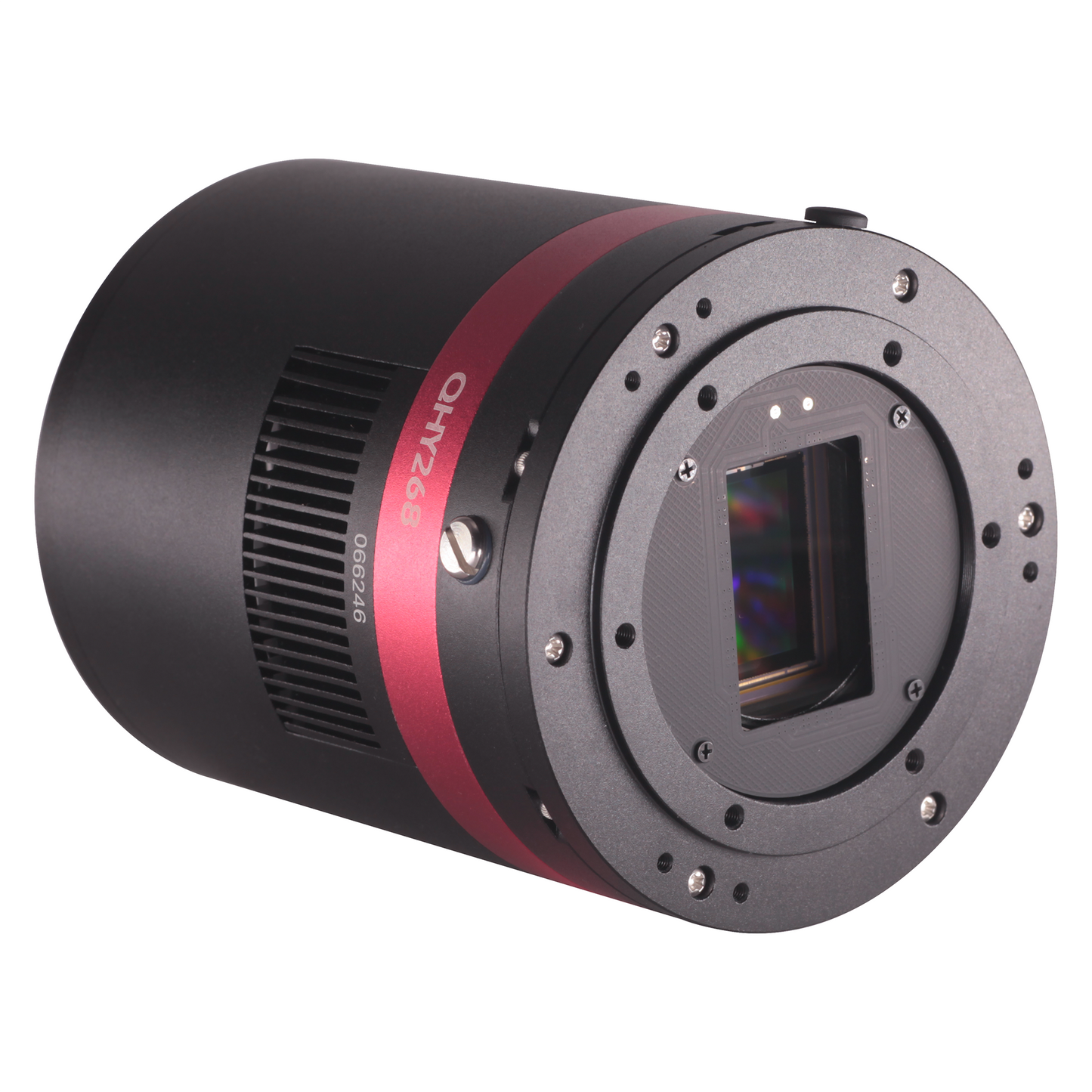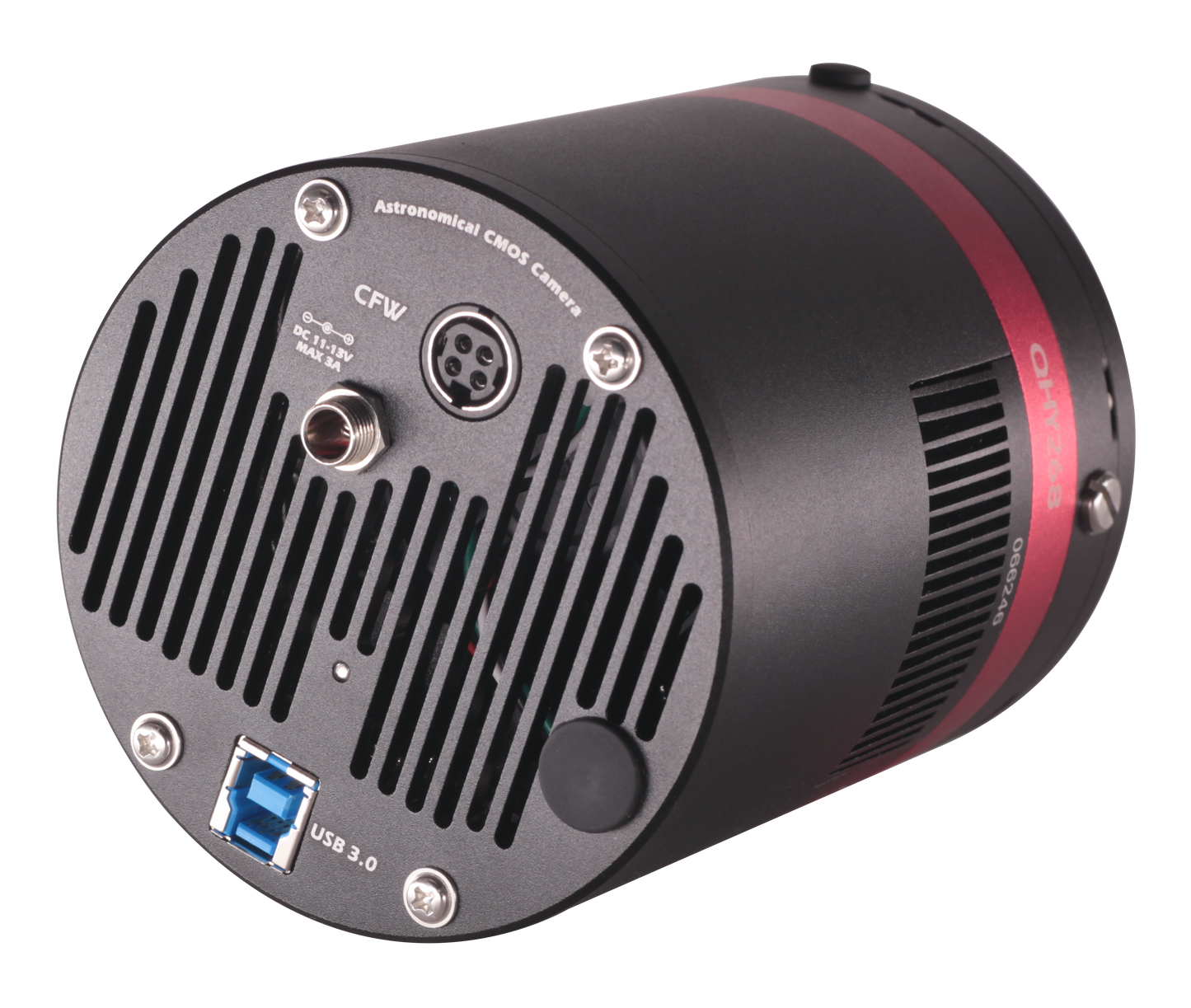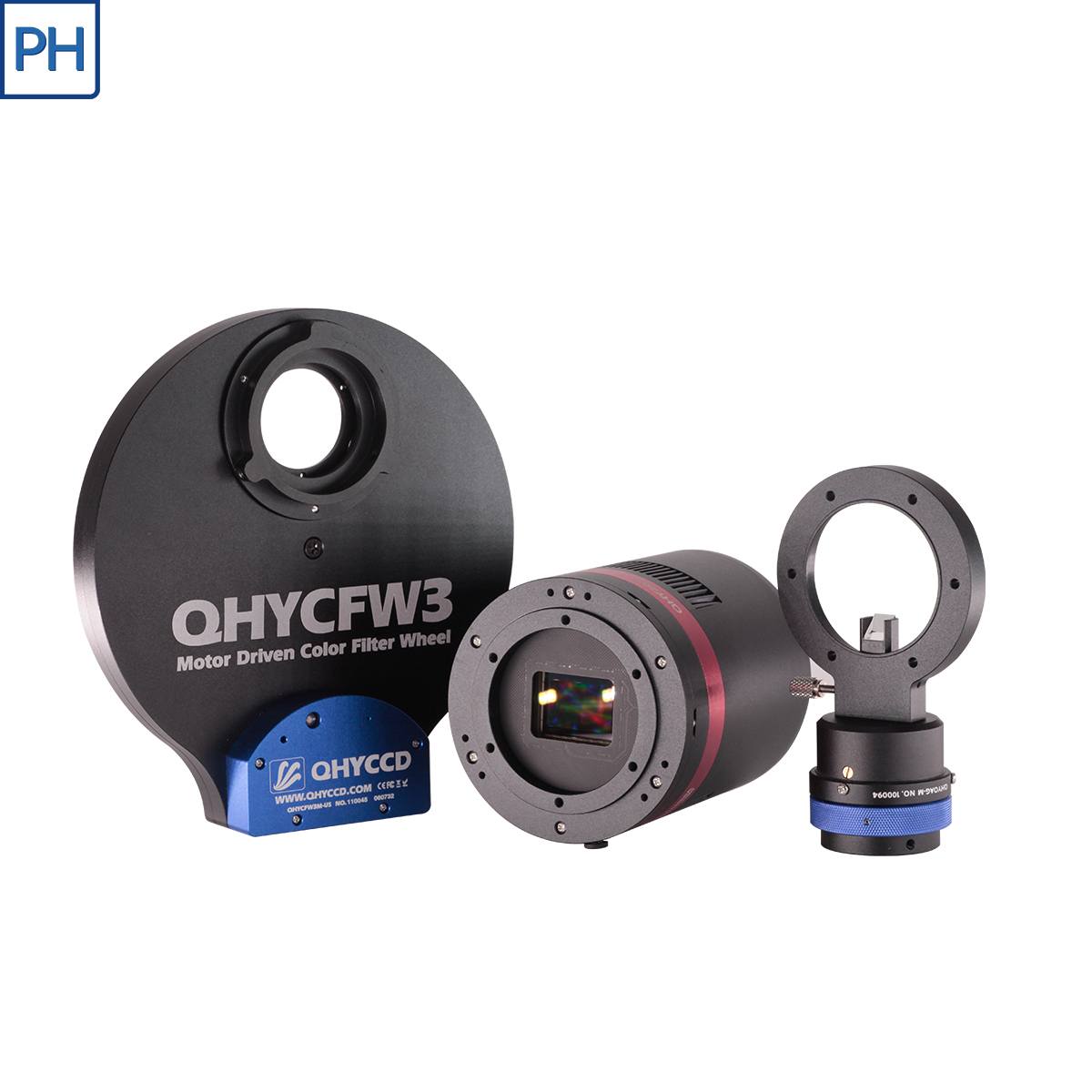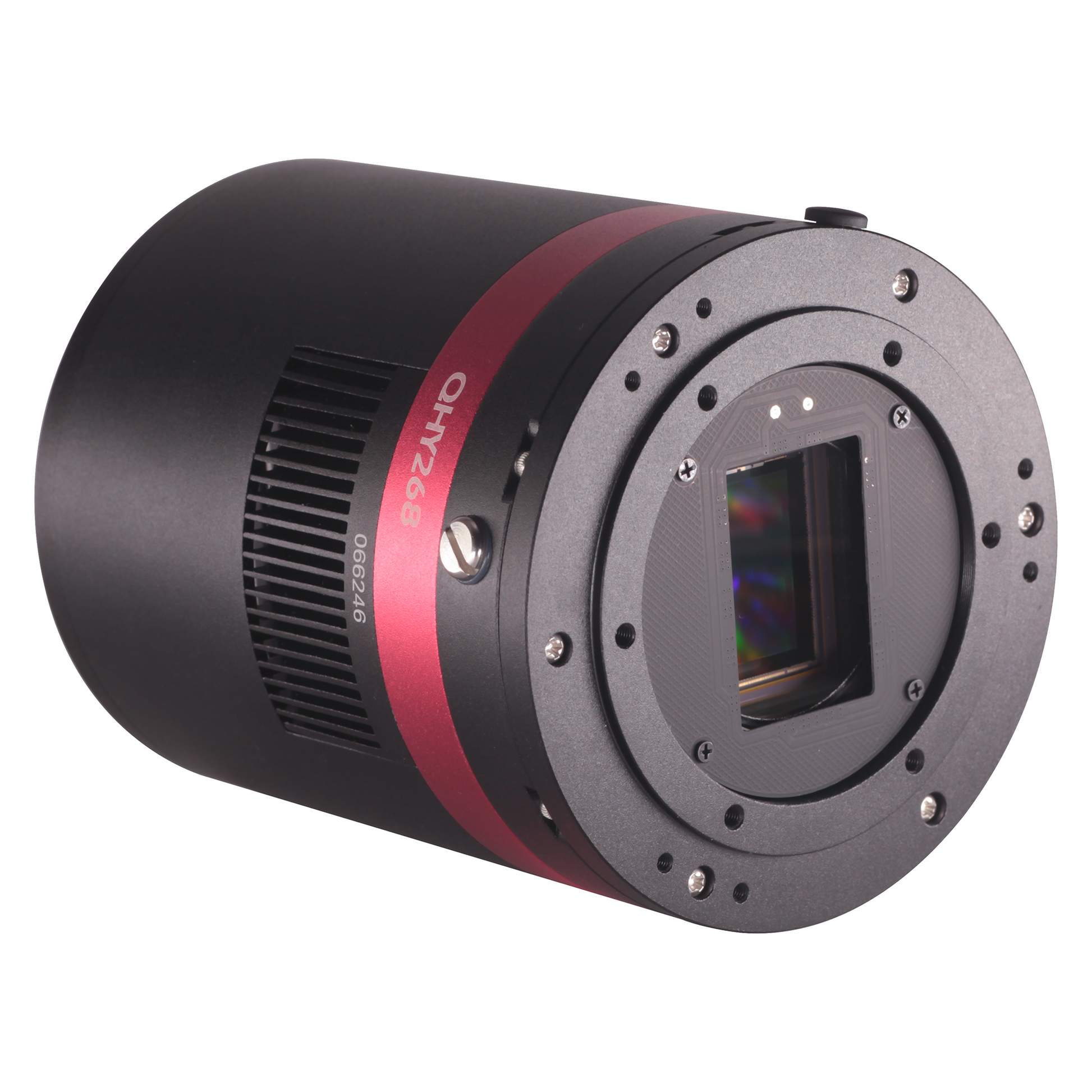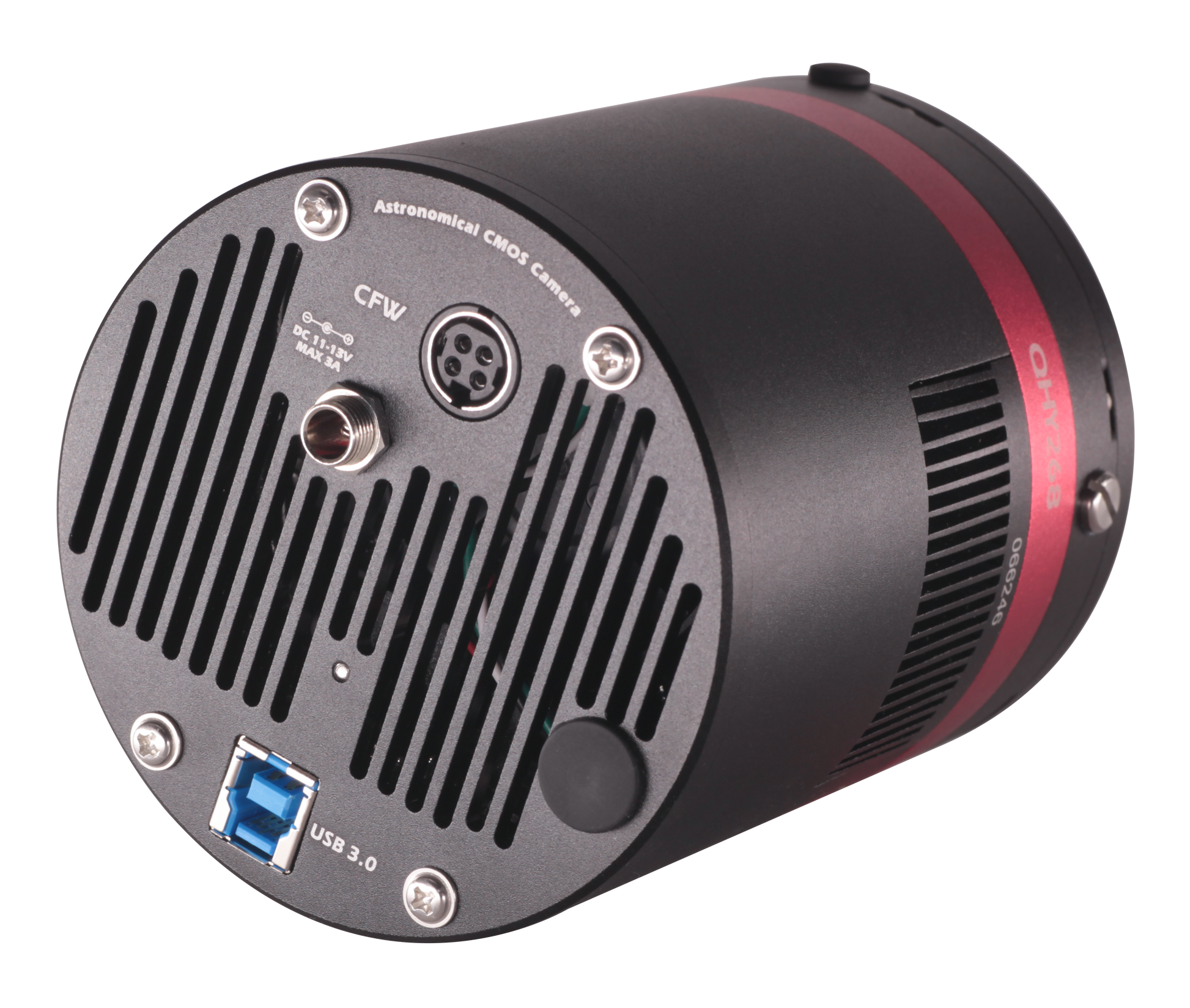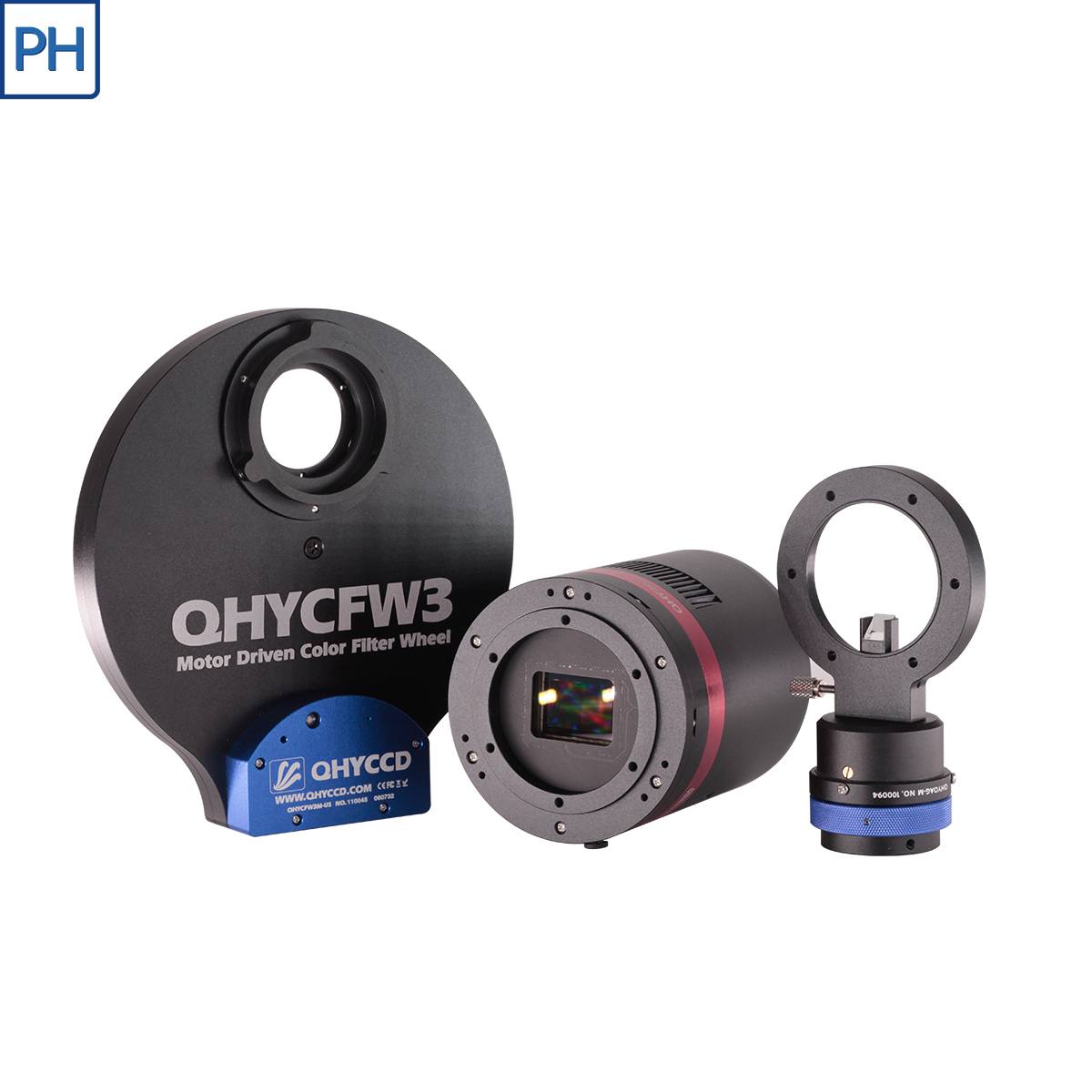QHY268M/C
QHY268M/C
Couldn't load pickup availability
The QHY268M/C is an advanced astronomical imaging camera designed for capturing celestial objects. Let’s delve into its features:
Review from Trevor Jones Astrobackyard
-
Sensor and Resolution:
- The QHY268M/C utilizes a Sony IMX571 sensor, which is back-illuminated and has a native 16-bit A/D (analog-to-digital) converter.
- It boasts a resolution of 26 megapixels with 3.76-micron pixels.
-
Monochrome and Color Versions:
- The QHY268M is the monochrome version, while the QHY268C is the color version.
- Both cameras offer true 16-bit A/D conversion, resulting in smooth gradations between colors.
-
Image Buffer:
- To ensure smooth data transfer, the QHY268 has a 1GB DDR3 image buffer.
- This buffer allows uninterrupted data flow from the entire 26MP sensor at high speeds.
-
Back Focal Length (BFL):
- Since January 2023, the top part of the QHY268C has been modified to match that of the QHY268M.
- The shorter back focal length (SBFL) version of the QHY268C now exists, with a BFL of 14.5mm (previously 23.5mm).
- This change provides more space for accessories like filter wheels or electric camera adapters.
-
Heating Board Position:
- Starting from June 2023, the heating board position of the QHY268PH Series was raised by about 5mm.
- This adjustment reduces the likelihood of fogging without affecting other camera functions.
- Mono cameras use the same adapter kit, while color cameras come with a different adapter kit (G1).
-
Advantages:
- Low readout noise and high-speed readout make CMOS technology ideal for astronomical imaging.
- The QHY268M/C offers low noise, high sensitivity, and no amplifier glow.
- Its 16-bit A/D ensures high-resolution sampling across the full well range.
-
Applications:
- Astrophotographers can use the QHY268M/C for capturing deep-sky objects, planets, and more.
For more details, you can visit the QHYCCD website1.
In order to provide smooth uninterrupted data transfer of the entire 26MP sensor at high speed, the QHY268 has 1GB DDR3 image buffer. The pixel count of the latest generation of CMOS sensors is very high resulting in greater memory requirements for temporary and permanent storage. The QHY268 has adopted a large-capacity memory of up to 1GB. Data throughput is doubled. This large image buffer meets the needs of high-speed image acquisition and transmission of the new generation of CMOS, making shooting of multiple frames smoother and less stuttered, further reducing the pressure on the computer CPU.
Internal Humidity Sensor
QHY268M has a unique internal humidity sensor (while QHY268C doesn’t). The Blue curve shown below represents humidity.
If you have certain needs for the frame rate of the device, such as meteor monitoring, etc., you can make selective updates.
Since most of the software that provides continuous mode (i.e. video output), such as SharpCap, only supports 8-bit or 16-bit mode, you need to select 8-bit mode output to achieve frame rate improvement in 12-bit High-Speed Mode.
Data comparison (USB3.0 at full resolution):
Before upgrade: 8-bit, 6.8fps
After upgrade: 8-bit, (12-bit out), 14.5fps max.
Native 16 bit A/D: The new Sony sensor has native 16-bit A/D on-chip. The output is real 16-bits with 65536 levels. Compared to 12-bit and 14-bit A/D, a 16-bit A/D yields higher sample resolution and the system gain will be less than 1e-/ADU with no sample error noise and very low read noise.
BSI: One benefit of the back-illuminated CMOS structure is improved full well capacity. This is particularly helpful for sensors with small pixels. In a typical front-illuminated sensor, photons from the target entering the photosensitive layer of the sensor must first pass through the metal wiring that is embedded just above the photosensitive layer. The wiring structure reflects some of the photons and reduces the efficiency of the sensor. In the back- illuminated sensor the light is allowed to enter the photosensitive surface from the reverse side. In this case the sensor’s embedded wiring structure is below the photosensitive layer. As a result, more incoming photons strike the photosensitive layer and more electrons are generated and captured in the pixel well. This ratio of photon to electron production is called quantum efficiency. The higher the quantum efficiency the more efficient the sensor is at converting photons to electrons and hence the more sensitive the sensor is to capturing an image of something dim.
Zero Amplify Glow: This is also a zero amplifer glow camera.
TRUE RAW Data: In the DSLR implementation there is a RAW image output, but typically it is not completely RAW. Some evidence of noise reduction and hot pixel removal is still visible on close inspection. This can have a negative effect on the image for astronomy such as the “star eater” effect. However, QHY Cameras offer TRUE RAW IMAGE OUTPUT and produces an image comprised of the original signal only, thereby maintaining the maximum flexibility for post-acquisition astronomical image processing programs and other scientific imaging applications.
Anti-Dew Technology: Based on almost 20-year cooled camera design experience, The QHY cooled camera has implemented the fully dew control solutions. The optic window has built-in dew heater and the chamber is protected from internal humidity condensation. An electric heating board for the chamber window can prevent the formation of dew and the sensor itself is kept dry with our silicon gel tube socket design for control of humidity within the sensor chamber.
Cooling: In addition to dual stage TE cooling, QHYCCD implements proprietary technology in hardware to control the dark current noise.
Advanced Functions Available
You may find some types of thermal noise can change with time in some back-illuminated CMOS cameras. This thermal noises has the characteristic of the fixed position of typical thermal noise, but the value is not related to the exposure time. Instead, each frame appears to have its own characteristics. The QHY600/268/461/411 use an innovative suppression technology that can significantly reduce the apparent level of such noise.
UVLO Protection
UVLO(Under Voltage Locking) is to protect the electronic device from damage caused by abnormally low voltages.
Our daily life experience tells us that the actual operational voltage of an electrical device must not significantly exceed the rated voltage, otherwise it will be damaged. For such precision equipment as cameras, long-term work at too low input voltage can also be detrimental to the working life of the camera, and may even make some devices, such as power manager, burn up due to long-term overload. In the all-in-one driver and SDK after 2021.10.23 stable version, the camera will give a warning when the input voltage of the camera is below 11V.
It is common behavior for a CMOS sensor to contain some horizontal banding. Normally, random horizontal banding can be removed with multiple frame stacking so it does not affect the final image. However, periodic horizontal banding is not removed with stacking so it may appear in the final image. By adjust the USB traffic in Single Frame mode or Live Frame mode, you can adjust the frequency of the CMOS sensor driver and it can optimize the horizontal banding appeared on the image. This optimized is very effective to remove the periodic banding in some conditions.
Specifications
| Model | QHY268M | QHY268C |
| CMOS Sensor | SONY IMX571 M | SONY IMX571 C |
| Mono/Color | Mono | Color |
| FSI/BSI | BSI | |
| Pixel Size | 3.76um x 3.76um | |
| Effective Pixel Area | 6280*4210 (includes the optically black area and overscan area) | |
| Effective Pixels | 26MP | |
| Sensor Size | APS-C | |
|
A/D Sample Depth
|
Native 16-bit (0-65535 greyscale) A/D | |
| Full Well Capacity (1×1, 2×2, 3×3) |
51ke- 75ke- or above in extended full well mode |
|
| Full Frame Rate |
USB3.0 Port: Full Resolution 6.8FPS @8BIT 6FPS @16BIT 2048lines 13.6FPS @8BIT 11.5FPS@16BIT 1080lines 25.4FPS @8BIT 19.5FPS@16BIT 768lines 35FPS @8BIT 25FPS@16BIT 480lines 50FPS @8BIT 34FPS@16BIT |
|
| Readout Noise |
1.1e- High Gain,3.5e- Low Gain
(5.3e- to 7.4e- in extended full well mode) |
|
| Dark Current | -20C,0.0005e /pixel/sec-10C,0.001e /pixel/sec | |
| Exposure Time Range | 30us-3600sec | |
| Recommend Gain* |
30 (PH Mode or Extended Full Well Mode)56 (High Gain Mode)
*With the improvement of the CMOS technology, For these 16bit CMOS cameras, even in lowest gain it has beyond the requirement of unit gain (less than 1e/ADU due to sufficient samples). Learn more at the “Readout Modes” part of this page. |
|
| Amp Control | Zero Amplifier Glow | |
| Firmware/FPGA remote Upgrade | Fully support via Camera USB port. | |
| Shutter Type | Electronic Shutter | |
| Computer Interface | USB3.0 | |
| Built-in Image Buffer | 1GByte DDR3 Memory | |
| Cooling System |
Two-stage TEC cooler Less than 1S lower than ambient temperature -30C in continuous mode
More than 1S continuous mode or lower than ambient temperature -35C in single frame mode (Test temperature +20°) |
|
| Optic Window Type | AR+AR High Quality Multi-Layer Anti-Reflection Coating | |
| Anti-Dew Heater | Yes | |
| Humidity Sensor* | Yes | No |
| Telescope Interface | Support M54 or M48 (Combined with adapters) | Support M54 or M48 (Combined with adapters) |
| Back Focal Length |
QHY268M: 12.5mm* *If companied with the QHY filter wheel, the BFL consumed is counted as 12.5mm. The actual BFL (the intercept from the CMOS chip to the top of the camera) is 14.3mm (±0.3). Since most users will match CFW with monochrome cams, please take 12.5mm as major reference. |
QHY268C: 14.3mm(±0.3)*
*Since 2023, the top part of QHY268C is the same as 268M. |
| Weight | About 810g | About 810g |
Share
